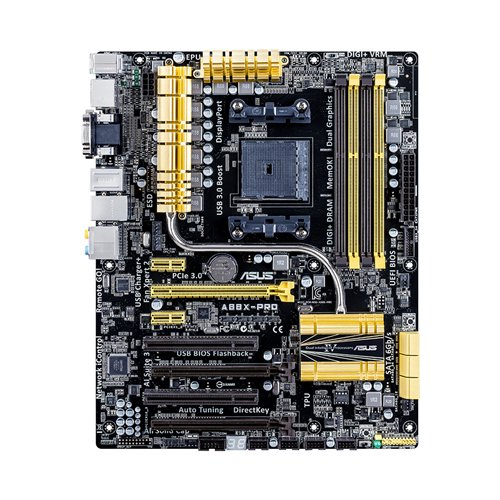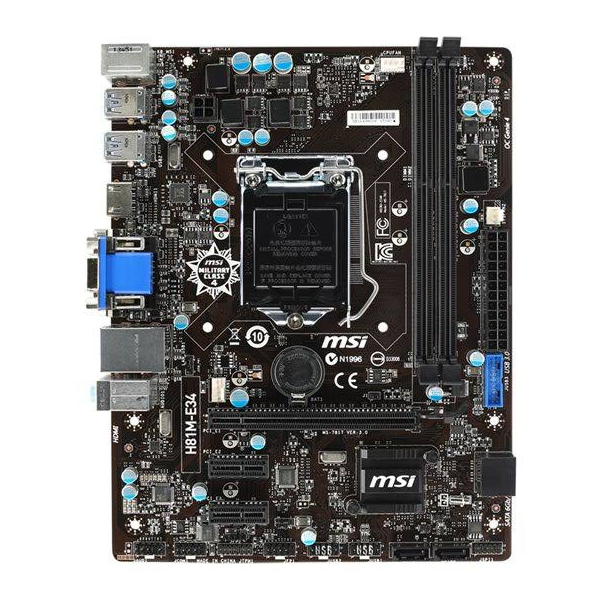MSI A78M-E35 Versus Gigabyte GA-F2A78M-D3H
Today we look at two AMD A78-based motherboards (MSI's A78M-E35 and Gigabyte's GA-F2A78M-D3H), to determine how they stack up against A88X.
Why you can trust Tom's Hardware
How We Test
Test System Configuration
I was fortunate enough to have access to the same APU and heat sink/fan combo that Thomas used in his A88X article. This should show whether I can achieve similar overclocking results as well as similar CPU performance in the applicable benchmarks.
I am also using the same brand and part numbers for memory and solid-state storage to better compare system configurations between our Intel and AMD budget systems. This will help eliminate DRAM inconsistency when comparing memory controller performance.
Though this APU has enough graphics muscle to drive decent frame rates at lower detail levels, the motherboard review team decided to put in a low-power GPU to help put both AMD and Intel budget systems on a level playing field. For that, a Gigabyte GeForce GT 730 was installed for graphics workloads so that I can test system stability and repeatability across platforms. Both motherboards do support AMD Dual Graphics technology, allowing you to install a discrete GPU for CrossFire with your APU.
To power these test boards, I am using the same PSU used in Four LGA-1150 Motherboards Under $60, be Quiet!'s Straight Power 10 500W. Since it is 80 PLUS Gold-rated, this unit will prove to be more efficient in low-load conditions.
Benchmark Settings
| Synthetic Benchmarks and Settings | |
|---|---|
| PCMark 8 | Version: 2.3.293 Work, Home, and Creative Benchmarks |
| SiSoftware Sandra | Version: 2015.01.21.15 CPU Arithmetic, Multimedia, Cryptography File System Bandwidth Memory Bandwidth |
| Cinebench R15 | Version: R15.0 x64 CPU Single- and Multi-Core |
| 3D Tests and Settings | |
| 3DMark | Cloud Gate Version: 1.1, Skydiver Version: 1.0 Test Set 1: Cloud Gate, 1920x1080, Default Preset Test Set 2: Skydiver, 1920x1080, Default Preset |
| Unigine Heaven 4.0 | Version 4.0, Built-in Benchmark DirectX 11, Low Detail, 1920x1080, No AA, No Tessellation |
| Unigine Valley 1.0 | Version 1.0, Built-in Benchmark DirectX 11, Low Detail, 1920x1080, No AA |
Comparison Products
Get Tom's Hardware's best news and in-depth reviews, straight to your inbox.
-
-Fran- The only problem I have with these boards, is the lack of a proper sound chip in them. The Realtek 887 sucks. It had been a 889 or a 1150 or even a VIA VT17xx, VT18xx or a VT 20xx.Reply
Plus, the VRMs have to be of good quality as well for noise over the sound card. Remember you're recommending these boards for HTPC as well, so noise over audio is a HUGE issue when not careful.
Cheers! -
SuperVeloce "It's also important to note that Intel’s multi-thread to single-thread ratio is 1.91 (close to two since it’s a dual-core processor), whereas AMD's ratio is 3.58, quite a way off from the ratio of four for a quad-core processor. This shows how important CPU architecture is."Reply
Well, A10 apu has turbo, Pentium does not, so there is that -
Shankovich Nifty little review. Have a friend who wants to game on PC more than console but doesn't want to spend much, was looking into AMD's APU's.Reply
Also, I love Gigabyte and they're usually my first choice for boards, but this review highlights my biggest pet peeve with them: fan header placement. Seriously Gigabyte, stop putting the damn things in line with PCI-E slots or in the most hard to reach places. -
Someone Somewhere One minor change: The specs chart up the top shows both boards as not having a digital audio out, but it's fairly obvious from the images that the Gigabyte does.Reply -
TheTerk ReplyOne minor change: The specs chart up the top shows both boards as not having a digital audio out, but it's fairly obvious from the images that the Gigabyte does.
the sample I reviewed is PCB revision 4.0 which does not have an optical out on the rear panel. Looking at Gigabyte's A78 page, revision 3.0 has the optical connector on the rear panel. Looks like there's a header location on the rev 4 board for S/PDIF connector. We will update the article accordingly.
-
logainofhades Reply16053568 said:I think you could have gone with faster ram for the igpu and ditched the GT 730
The GT 730 would still be faster, as it was the 64bit, GDDR5, version. If memory serves me right, the 7850k's IGP was about even with an R7 240. The GT 730 is 3 tiers above that, according to the GPU Hierarchy Chart.
-
RedJaron Reply
We also aren't going for maximum performance or performance/money here. Keeping the test benches similar ( hopefully identical except for the reviewed part, ) means the results are more comparable.16060542 said:16053568 said:I think you could have gone with faster ram for the igpu and ditched the GT 730
The GT 730 would still be faster, as it was the 64bit, GDDR5, version. If memory serves me right, the 7850k's IGP was about even with an R7 240. The GT 730 is 3 tiers above that, according to the GPU Hierarchy Chart. -
jack_28 Actually the a10 7850k onboard gpu (with 2133 mhz ram) is closer to the r7 250 ddr 3 . One can easily find articles testing this by a little googling.Reply

